Asus Zenfone 11 Ultra
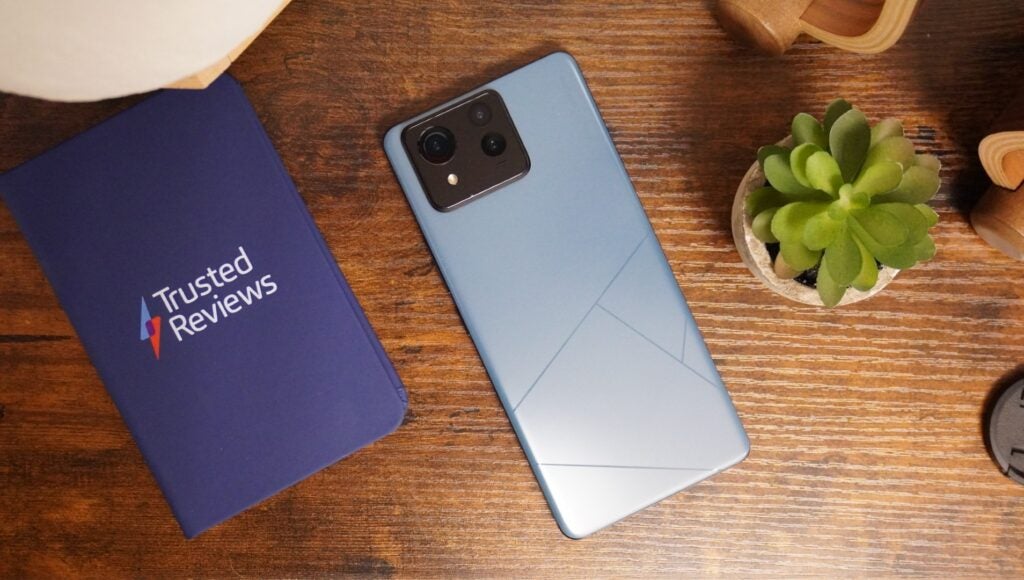

The Asus Zenfone 11 Ultra removes the one USP of previous entries in the Zenfone series – the compact form factor. With this big-screen release, Asus struggles to stand out from the flagship competition, while overheating issues and a disappointing long-term software promise make it even less tempting than it otherwise would’ve been.
Pros
- Unique 6-axis stabilisation system
- Refreshingly customisable approach to Android
- All-day battery life
Cons
- Massively overheats when playing demanding games
- Rather average camera setup
- Only 2 OS upgrades planned
Key Features
- The big-screen Zenfone experienceThe Zenfone 11 Ultra is the first Zenfone to break away from the compact nature of the series for the past few years with a big 6.78-inch AMOLED display.
- All-day battery lifeWith a big 5500mAh battery that’s bigger than most of the competition, the Zenfone 11 Ultra can last all day without needing a top-up.
- Unique camera stabilisation systemUsing Asus’ proprietary 6-axis gimbal stabilisation 3.0 tech, the Zenfone 11 Ultra captures buttery smooth video free of jitter, and it makes capturing crisp photos easier too.
Introduction
The Asus Zenfone 11 Ultra is here, and it’s quite a bit different from the compact Asus Zenfone 10.
Given that the past few generations of Zenfone have focused on being as compact and pocketable as possible, you might assume that the 11 Ultra is an ultra-powerful compact smartphone with better performance and more cameras – but you’d be wrong. To Asus, the Ultra branding simply means ‘big’.
It’s also a bit of an odd launch as, despite the release of the Asus Zenfone 11 Ultra, there’s no regular Zenfone 11 to accompany it. Will a compact version follow in a few months? There’s no confirmation just yet, but that would seem likely.
For now, though, we’re left with a big-screen preview of the Zenfone 11, and it’s a very familiar device indeed. From the design to core components like camera setup and battery, this is essentially a reskinned ROG Phone 8, albeit without the gaming features that make the alternative so unique.
Now with a big screen just like the rest of the premium competition, can the £869 Asus Zenfone 11 Ultra stand out? Coupled with issues around overheating that I’ve experienced during the review period, I’m not so sure.
Design
- Near–identical to ROG Phone 8 series
- Fairly chunky design
- IP68 protection
If the Zenfone 11 Ultra’s design looks familiar, it should; it’s a near-carbon copy of the ROG Phone 8 Pro from earlier this year, sans the dot matrix rear display panel. Reader, I am not a huge fan at all.
You see, while I appreciated the design of the ROG Phone 8 range at launch in January, it was because it was a gaming phone masquerading as a flagship phone with a much more toned-down design. It was still thick and heavy at 8.9mm and 225g respectively, but with advanced cooling, AirTriggers, and other game-focused features, it was an acceptable compromise.

The problem is that the Zenfone 11 Ultra is just as thick and heavy, but doesn’t offer any of the high-end gaming features of the ROG Phone 8 Pro. This does allow it to come in at a slightly lower price point, but that doesn’t stop it from being comparatively chunky and blocky compared to sleek, curved alternatives like the OnePlus 12, Honor Magic 6 Pro and Pixel 8 Pro.
It’s also just a bit odd-looking, with an equally blocky all-black camera block protruding from the top-left of the already-thick phone, making it look more like a phone from 2020 than something you’d find on the 2024 flagship scene.
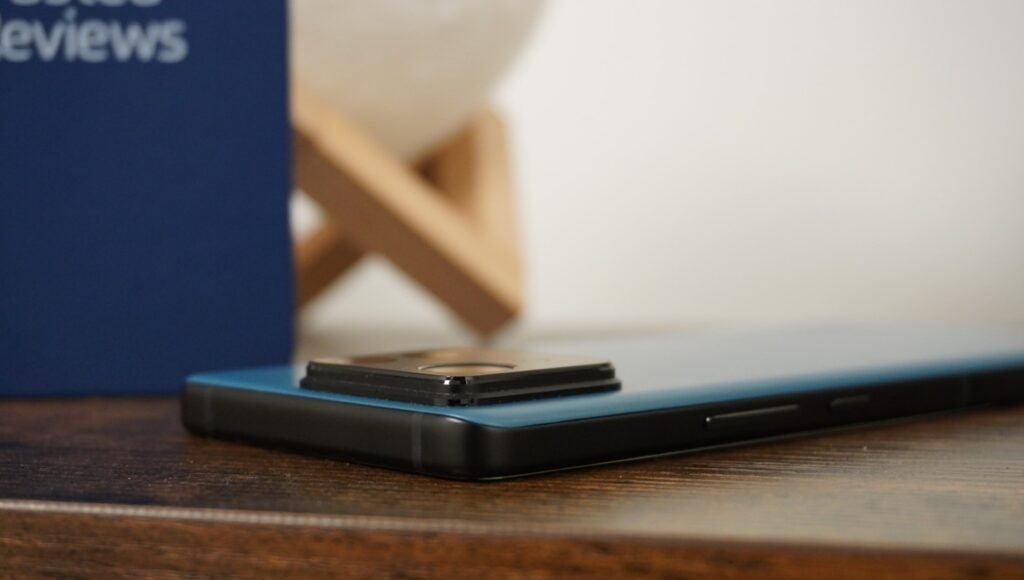
That all said, I do appreciate the frosted glass rear that has a nice satin-like feel in the hand and helps hide those annoying fingerprint smudges, and the collection of lines towards the bottom helps break up the blocky design somewhat. If the skyline blue finish here isn’t your cup of tea, it’s also available in misty grey, desert sand and eternal black.
Of course, design is totally subjective and it could be that you adore the look of the Zenfone 11 Ultra, but it’s not one of my favourites of 2024.
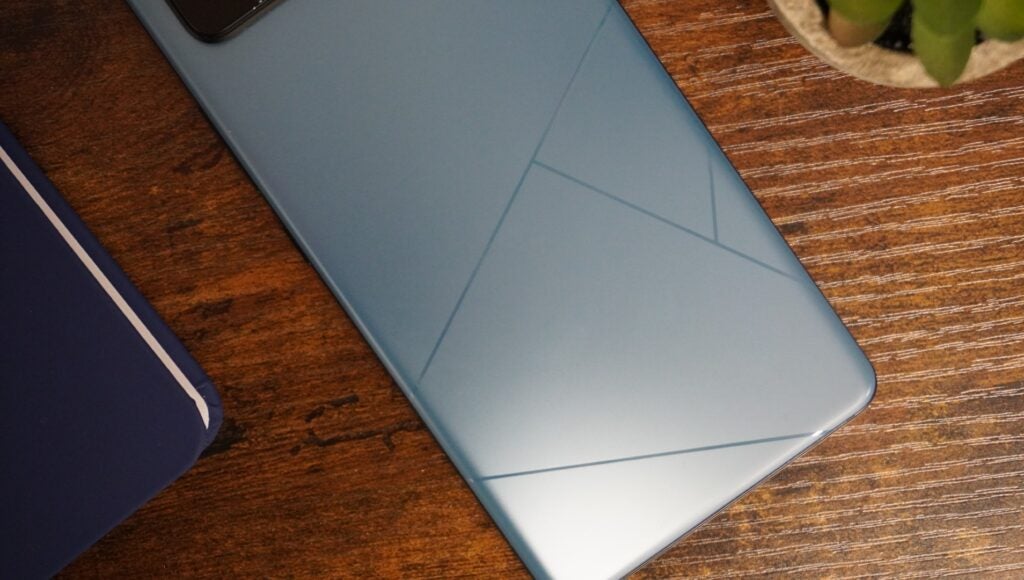
There are redeeming features, of course; the phone is made from a premium construction of glass and aluminium that feels good in the hand, and the screen is protected by Corning’s Gorilla Glass Victus 2.
It also boasts IP68 dust and water resistance, and, crucially, a 3.5mm headphone jack – even if its inclusion does mean a rather odd layout on the bottom of the phone, with the USB-C and headphone jack on the left and right-hand sides, respectively.
Screen
- Big 6.78-inch AMOLED display
- 144Hz for gaming
- Stereo speakers & headphone jack
The Zenfone 11 Ultra’s 6.78-inch AMOLED panel is bright and vivid, with an FHD+ resolution that still looks detailed despite the screen’s relatively large dimensions. It also features staples of high-end screen tech, like a maximum brightness of 2500nits for HDR content and 1600nits in HBM (high brightness mode), and a super-fast 144Hz refresh rate.
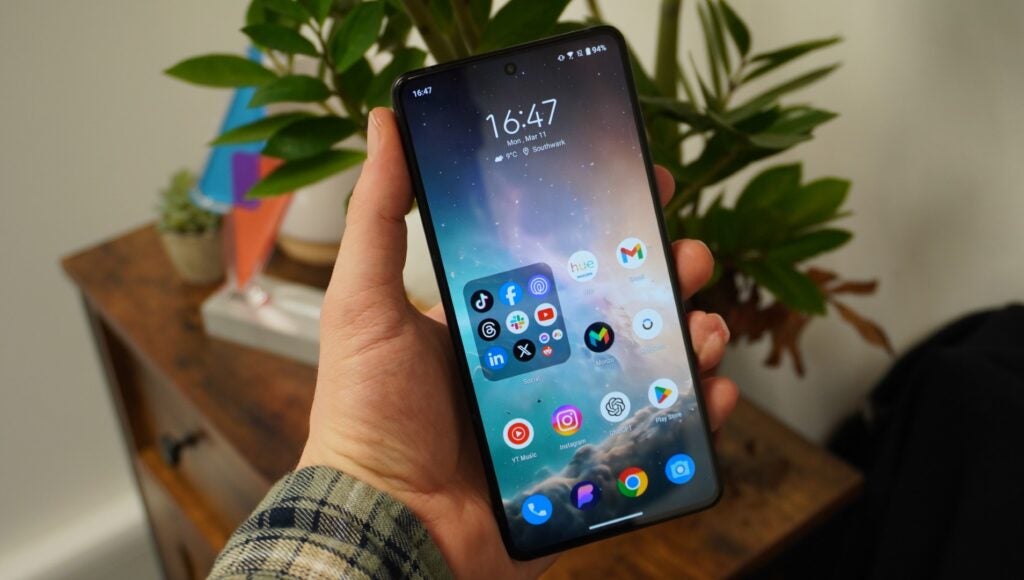
There is a catch here, though; the 144Hz refresh rate will only be used when playing games. Thanks to LTPO support, the phone will run between 1 and 120Hz the rest of the time, allowing for much better battery efficiency than running at a locked 144Hz.
It’s not exactly a dealbreaker as the visual differences between 120Hz and 144Hz are negligible in all scenarios except gaming. It’s also why I’m not really disappointed that it doesn’t match the near-identical ROG Phone 8 Pro’s 165Hz refresh rate. It’s much of a muchness at that point.
My only big complaint is the always-on display; while it works in the same way as practically every other option on the market, I’ve noticed that the AOD is noticeably dimmer than much of the competition, so much so that I can’t really see it that well in well-lit environments, and there’s no way to adjust the brightness either.
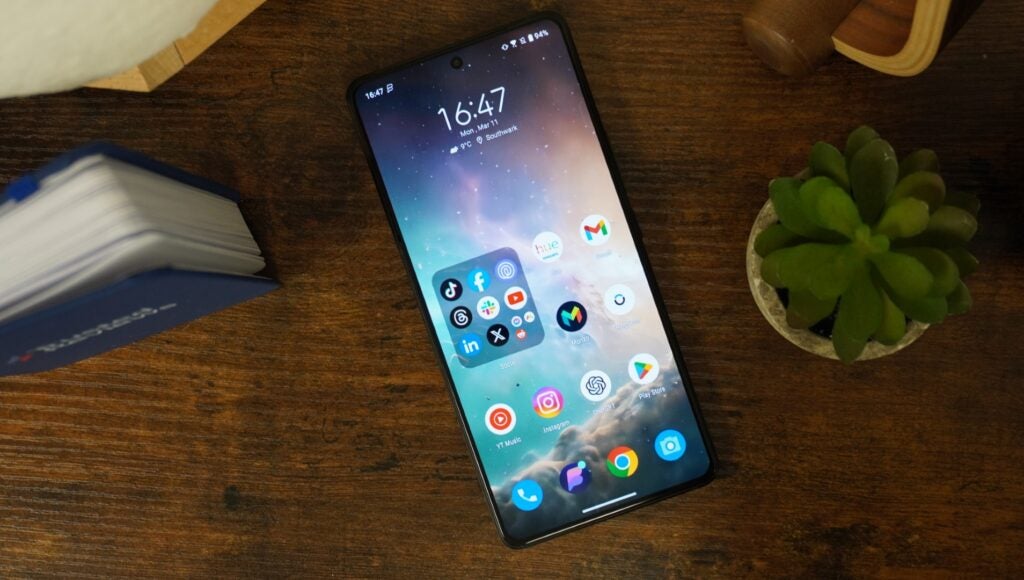
Elsewhere, though, the big-screen experience is certainly a nice change compared to the pocketable Zenfone 10. Paired with dual stereo speakers 25% larger than those of the Zenfone 10, it lends itself particularly well to gaming, watching TV shows on Netflix, and even scrolling through TikTok, and with a 3.5mm headphone jack, you can connect a pair of wired cans for private watching.
The latter is a nice surprise at the high end of the market where, aside from outliers like the Xperia 1 V, the 3.5mm headphone jack has gone the way of the Dodo.
Everything feels that little bit bigger and better then, but in doing so, the Zenfone has lost its USP. It’s now just another big phone, just like practically every other high-end phone on the market, so let’s hope the regular Zenfone 10 gets an update sometime soon to match.
Cameras
- Impressive 6-axis stabilisation tech
- Rather average triple-camera setup
- Up to 8K@24fps video capture
When it comes to the Zenfone 11 Ultra’s camera setup, it’s all about stabilisation. It comes in the form of Asus’ unique 6-axis hybrid gimbal stabiliser 3.0 tech, which does an impressive job of steadying a shaky hand both when taking photos and capturing videos. It’s easily one of the phone’s most interesting features overall.
Essentially, as long as you keep the small circle within the larger circle in the Camera app UI, the gimbal should be able to stabilise the camera system without a hint of jitter or blur.
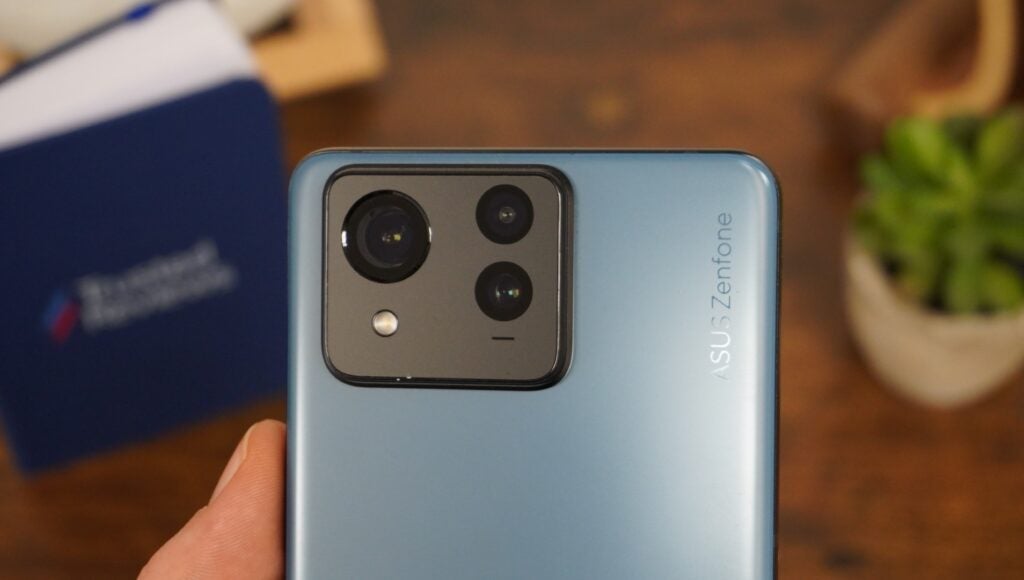
It means that taking photos one-handed becomes a doddle with generally sharp results, though it’s most noticeable when activating the Super HyperSteady video stabilisation. This basically turns any handheld video into a super smooth masterpiece.
Take the video below, for example; despite the fact that I was holding the phone with just two fingers while walking and throwing a ball for my dog Luna, there’s only an ever-so-slight jitter.
That makes it a particularly handy camera for creators, especially when paired with the maximum video resolution of 8K@24fps.
Elsewhere, however, the triple camera setup of the Zenfone 11 Ultra doesn’t exactly get my heart racing. Matching the camera setup of the ROG Phone 8 Pro – which is a bit of a red flag given gaming phones aren’t traditionally camera-focused – the ZenFone 11 Ultra sports a rather standard 50MP main, 32MP 3x telephoto and 13MP ultrawide lens.
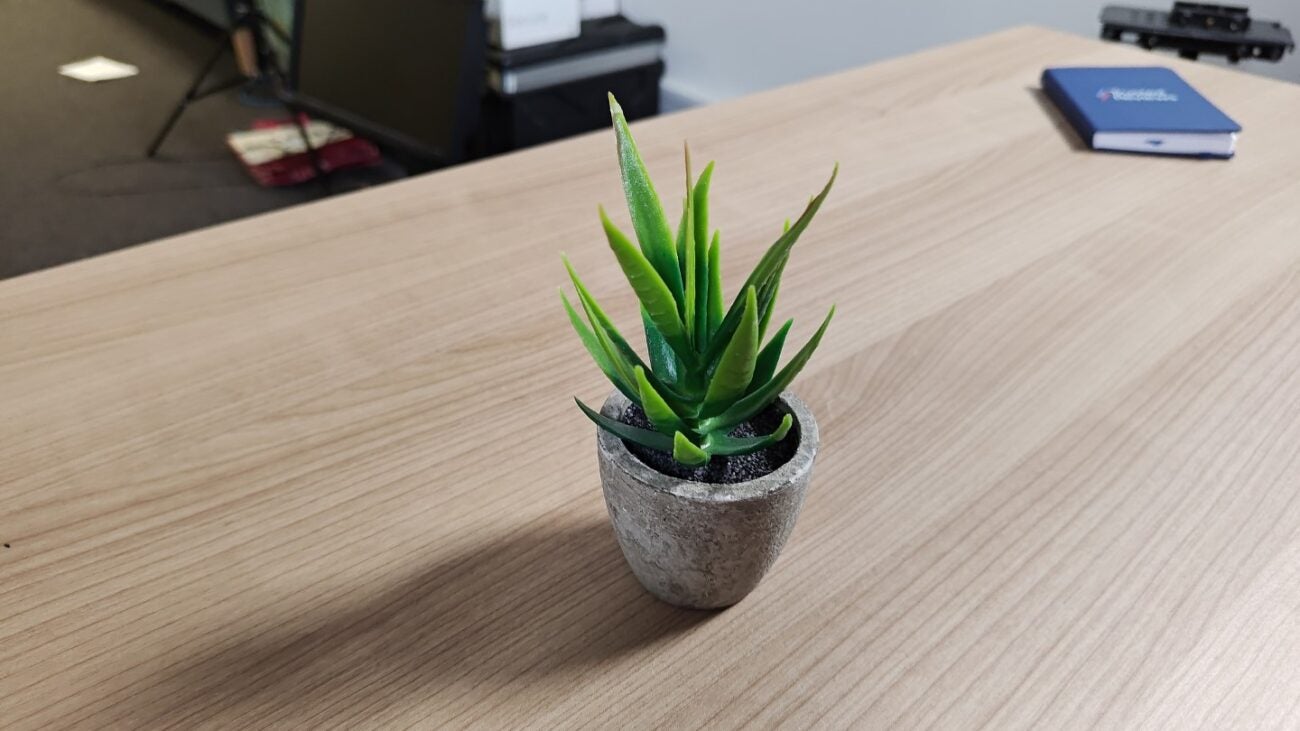





These lenses are probably best described as fine. The primary camera is the most capable of the three, capturing fairly detailed images in well-lit and low-light environments, even if the latter lacks the clarity of similarly priced alternatives like the Pixel 8 Pro, and the colours are rich without being overly vibrant.






The accompanying 3x telephoto is handy if you want to get a little closer to the action, and the narrower framing lends itself well to portrait photography, but the use of a fixed telephoto in place of a periscope lens with variable zoom means the quality drops quickly once you push past the fixed 3x zoom. The tuning could also be better, as colours look slightly off compared to the main snapper.



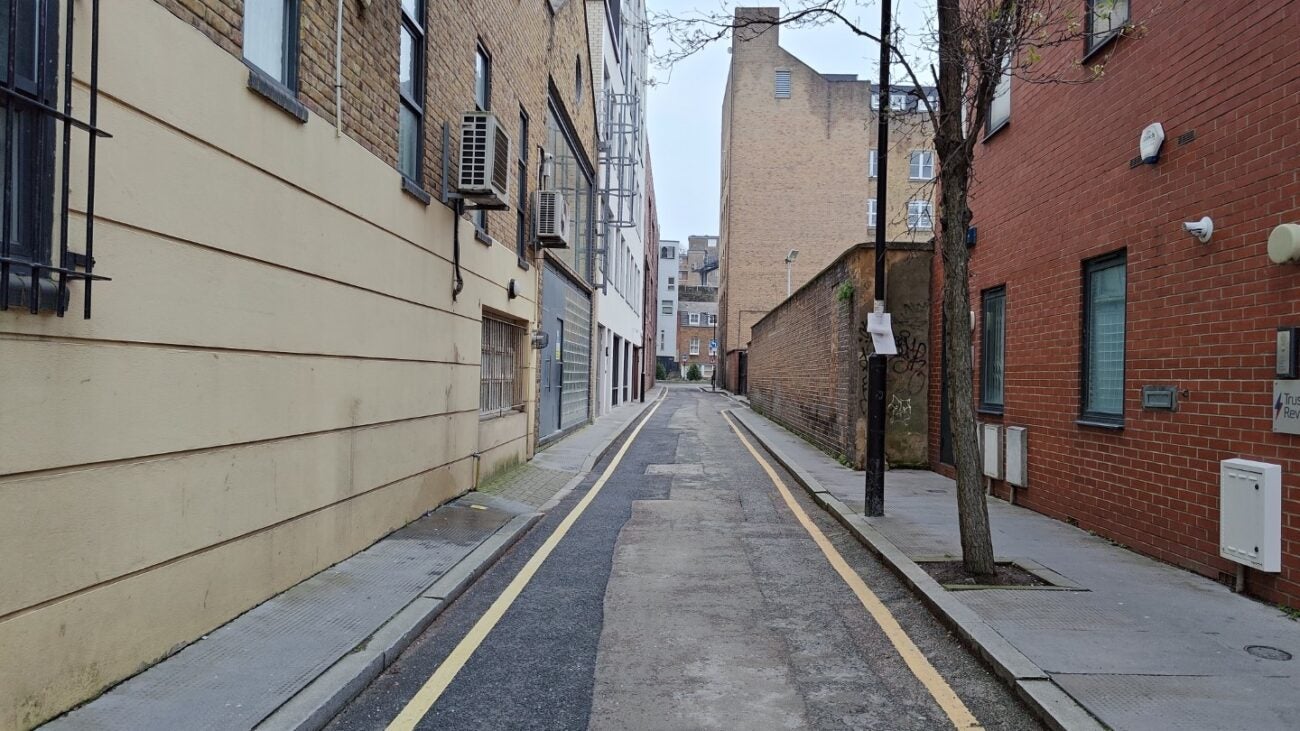

The 13MP ultrawide doesn’t exactly excite either, with a much lower resolution sensor than the similarly priced OnePlus 12 that, while still capturing decent ultra-wide-angle shots, aren’t exactly packed with detail, and quality tends to drop quite rapidly in darker environments.
Performance
- Snapdragon 8 Gen 3
- Up to 16GB RAM/512GB storage
- Gets worryingly hot to the touch in ultra performance mode
The Asus Zenfone 11 Ultra is a flagship phone with a flagship chipset to match. That, rather unsurprisingly, comes in the form of the popular Snapdragon 8 Gen 3, coupled with 12GB of RAM and a healthy 256GB of storage as standard, though you can also pick up a 16GB/512GB variant if you need more.
As you’re probably aware at this point given the 8 Gen 3 is present in much of the high-end competition in 2024, the chipset is an absolute processing beast. Compared to the Snapdragon 8 Gen 2 within last year’s Zenfone 10, there are gains of 20% in the CPU department, 25% in the GPU department and a whopping 98% performance increase to the NPU that enables some particularly interesting features – but more on that in a bit.
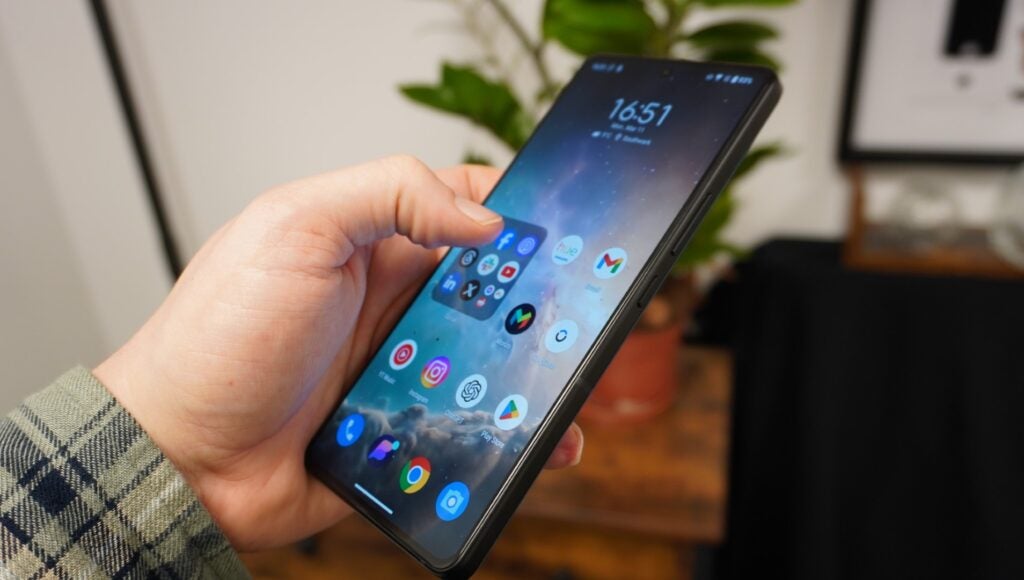
With that in mind, the Asus Zenfone 11 Ultra absolutely breezed through our bevvy of benchmark tests, offering top-end scores in CPU benchmarks like Geekbench 6 and high frame rates in the GPU-focused GFXBench tests that allow it to compete with the likes of the Samsung Galaxy S24 Plus and Honor Magic 6 Pro.
That all translates to smooth everyday use, with the Zenfone 11 Ultra easily able to handle whatever I could throw at it, from scrolling through media-heavy apps like Facebook to browsing ad-laden websites on Google Chrome.
However, I wouldn’t recommend enabling the ‘Ultra performance’ mode when playing demanding games. That might sound rather unintuitive, but in my experience, the phone gets exceedingly hot in this mode – so much so that I couldn’t pick the phone up after running our 3D gaming stress test for just 20 minutes.
Even compared to other flagship phones I’ve tested recently, which get a little warm after the stress test, the Zenfone 11 Ultra gets uncomfortably hot to the touch, and that also increases battery drain to around 1% per minute.
Rather oddly, the phone does still perform well even when noticeably hot to the touch, with high benchmark scores and no lag when scrolling around the OS. It’s possible that it’s just doing a very good job of directing heat away from the chipset, but it’s certainly not comfortable for the end user. If you’re a gamer, you’re probably better off with the ROG Phone 8 Pro.
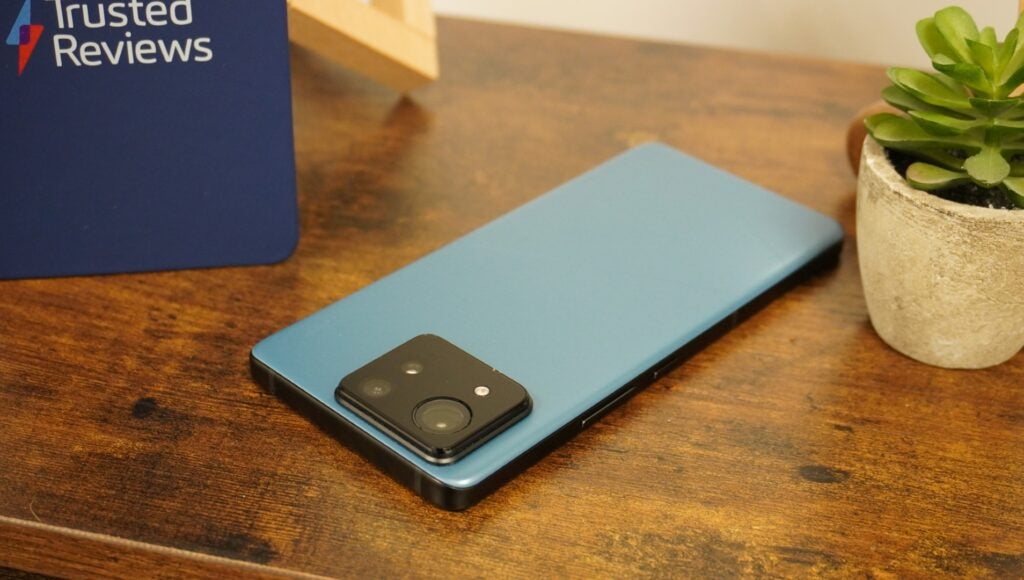
Software and AI
- ZenUI is highly customisable
- Basic GenAI support
- Disappointing long-term support
There are a lot of Android phone makers that take the core Android experience and distort it in various ways, be it the iOS-esque approach to Honor’s MagicOS or the dot-matrix style of Nothing OS, but that’s not really the case with Asus’ ZenUI, sitting atop Android 14 on the Zenfone 11 Ultra.
In fact, it’s one of the best approaches to a custom Android skin around. It lets you pick and choose whether you want to use ZenUI or stock Android 14 elements in the OS, from the notification centre to the volume controls. It lets you get the exact experience you want, and even if you go all-in on ZenUI, it’s not that different from stock Android 14.
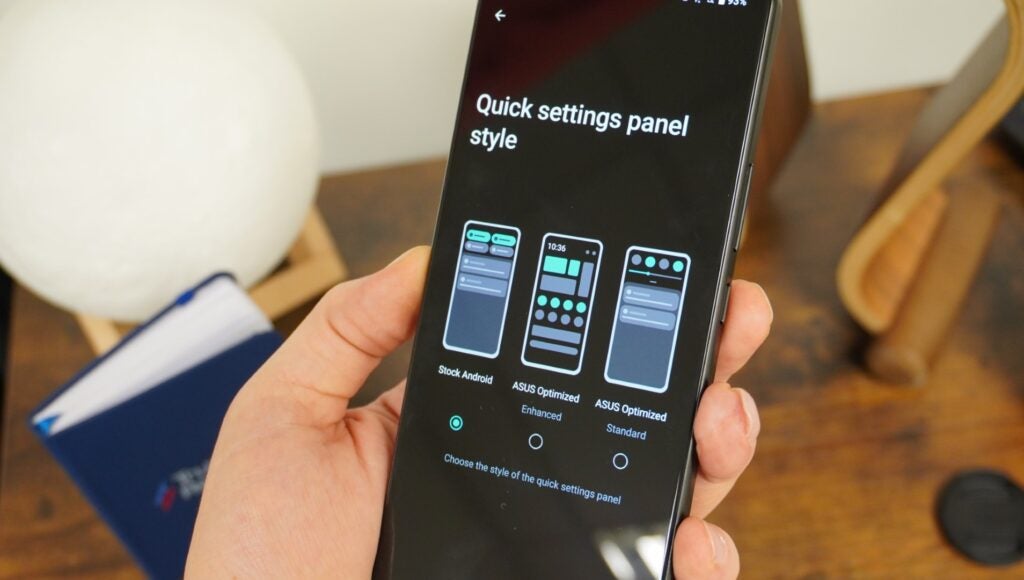
That means it’s easy to use and everything works as you’d expect it to, though, as with a growing number of manufacturers in 2024, Asus has infused its OS with on-device GenAI capabilities.
That includes Semantic Search, which is essentially a way for you to search for apps, photos and even menus within the Settings app by describing what you’re looking for.
It’s particularly helpful in the Settings app, where it can sometimes be hard to find the setting you’re looking for, even more so if you can’t remember the name of the exact setting you want to change. For example, typing in silent mode will show results for Do Not Disturb alongside other sound settings.
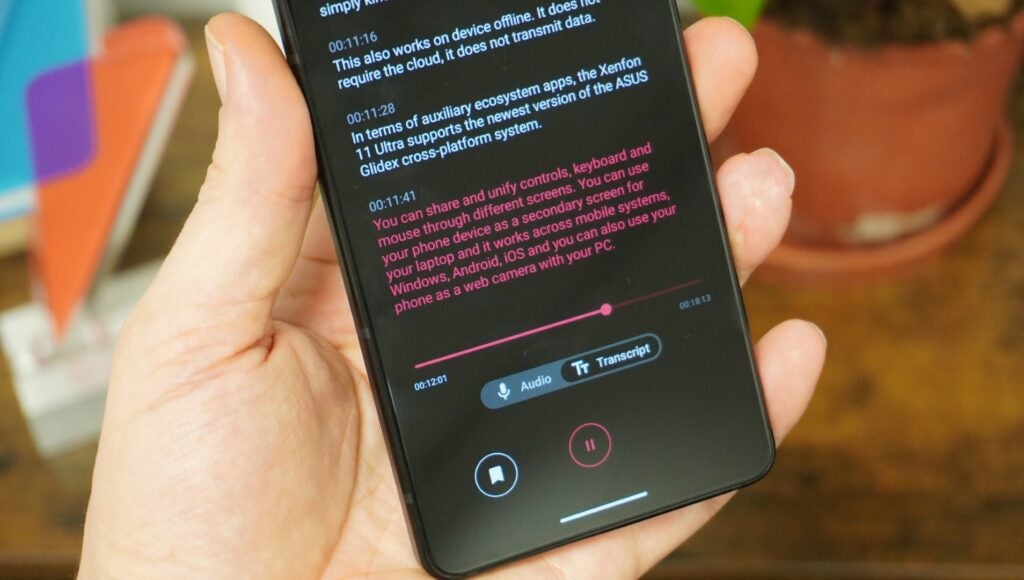
Another big feature is on-device transcription and summarisation built into the voice recorder app. It does what it says on the tin – transcribes voice recordings in English, Chinese, German Spanish, Portuguese, Italian and Japanese – and it does so in real-time, making it more like what you’ll find on the Pixel 8 than Galaxy S24, with the latter requiring post-record processing to transcribe.
There are a bunch of smaller AI features to round out the feature set including AI-generated wallpapers, portrait effects for videos, and noise cancellation on calls for both you and the recipient of the call. Like Galaxy AI, you can also translate calls in real-time – though, rather oddly, there’s no standard on-device translation available.
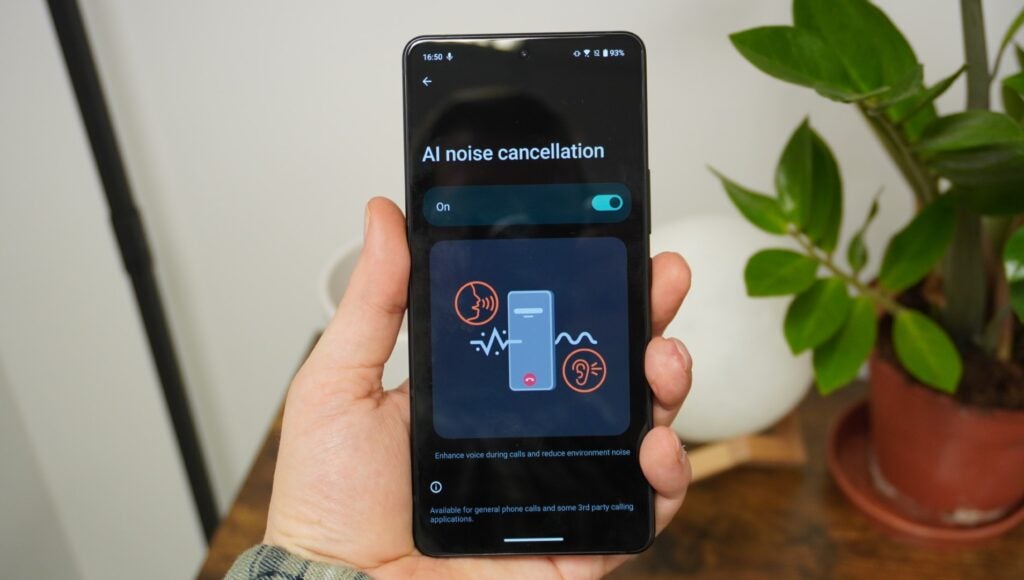
It’s worth noting that you won’t get access to these features from day one, with Asus providing a special version of the software with previews of AI tech for review purposes. Instead, you’ll get the features via software updates in the coming months.
In fact, the only real disappointment here is the long-term software promise; with just two OS upgrades and four years of security patches, it pales in comparison to the seven OS upgrade promise of the similarly priced Samsung Galaxy S24 Plus and Google Pixel 8 Pro.
Battery life
- Large 5500mAh battery
- All-day battery life
- Full charge in less than an hour
Battery life is an interesting area for the Zenfone 11 Ultra. It sports a large 5500mAh battery that’s bigger than the 5000mAh battery you’ll find in most competing flagships like the Samsung Galaxy S24 Ultra and OnePlus 12, and that should suggest longer battery life than its counterparts, but that’s not really the case.
Don’t get me wrong here; the Zenfone 11 Ultra had enough juice to get me through an average 16-hour day with a healthy mix of replying to texts and emails, phone calls, listening to music and doomscrolling on TikTok, but I’d find I’d usually get to the end of the day with around 20-30% left in the tank.
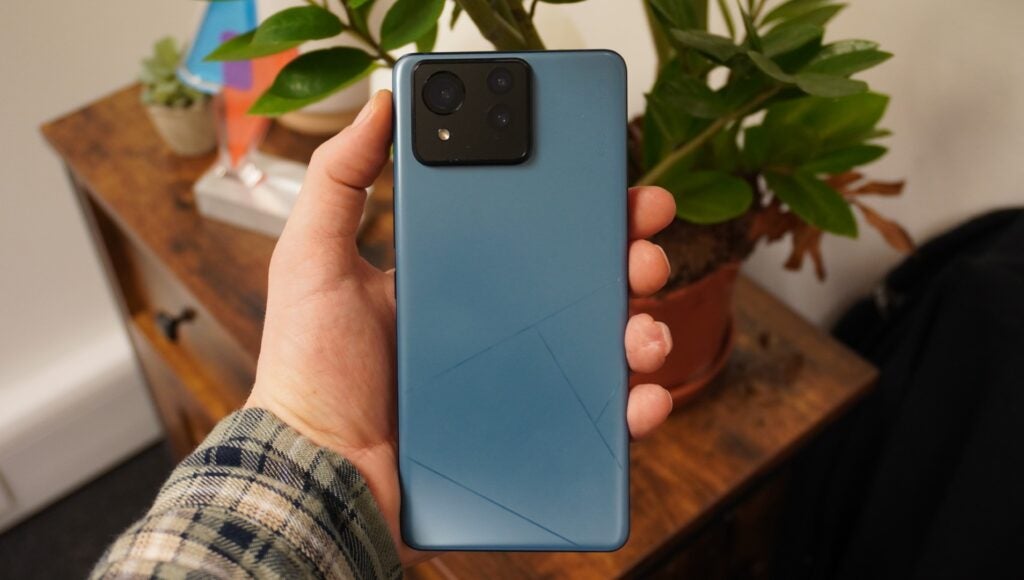
That’s comfortable all-day battery life in my books, but when the Galaxy S24 Ultra and OnePlus 12 managed the same with around 40-50% left in the tank, it’s not quite the best around. That means it’s still a phone that you’ll need to charge every night to avoid running flat mid-way through the second day.
The good news is that the Zenfone 11 Ultra offers 65W fast charging, and unlike much of the competition, you don’t need a proprietary charging brick and cable to take advantage of top-end speeds. Instead, any USB-C charger that supports USB PD 3 & PPS should deliver the advertised speeds.
However, that also means Asus felt no need to include a fast charger in the box, so you’ll have to source one separately if you want to take advantage of the tech.
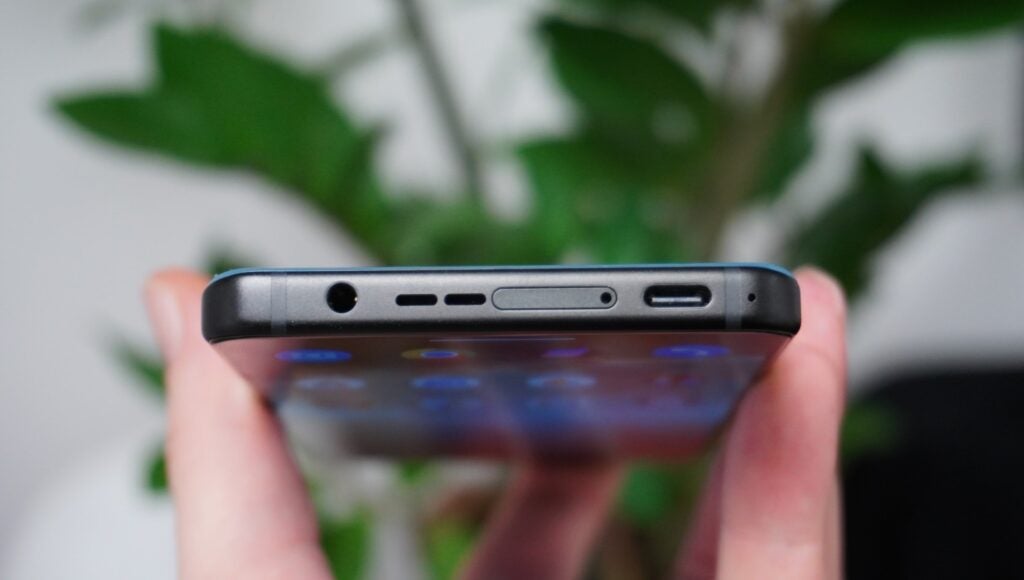
With a 65W USB-C charger I had handy, the Zenfone 11 Ultra regained 69% charge in 30 minutes with a full charge taking 56 minutes. It’s not quite up to the levels of the OnePlus 12 and its full charge in 26 minutes, then, but it’s faster than Samsung’s flagships, and it’ll still reduce the amount of time your phone spends tethered to the wall.
If wired charging is too finicky for you, there’s also 15W wireless charging for a more convenient, if much slower, way to recharge the phone. However, reverse wireless charging support isn’t available, so your accessories will need to find charge power elsewhere.
Latest deals
Should you buy it?
You record a lot of videos
With the unique 6-axis stabilisation technology, videos recorded on the Zenfone 11 Ultra are smooth.
You play a lot of mobile games
With overheating issues when playing demanding 3D titles, the Zenfone 11 Ultra, rather ironically, isn’t good for gaming.
Final Thoughts
The Asus Zenfone 11 Ultra is a fine phone – it does most things well, but it doesn’t really exceed in any given area. The cameras are pretty much in-line, if not quite as capable, as similarly priced alternatives, the screen tech mostly matches that of the competition, and despite having a larger battery than most, it’s still just a one-day device.
That said, the Zenfone 11 Ultra’s highly customisable approach to Android 14 is one of the best around, offering the choice between stock and ZenUI on a granular level, and the AI features enhance the experience even if they don’t go quite as far as the likes of Samsung’s Galaxy AI.
However, there are big issues with overheating when playing games that make it tough to recommend to mobile gamers, and the long-term promise of just 2 OS upgrades and 4 years of security patches is really lacking compared to the seven OS upgrades from even cheaper flagships like the Galaxy S24 and Pixel 8.
Combined with the £869 price tag, you’d likely be better off with alternatives like the OnePlus 12, Google Pixel 8 Pro and Samsung Galaxy S24 Plus unless you really want that 6-axis gimbal stabilisation tech.
How we test
We test every mobile phone we review thoroughly. We use industry-standard tests to compare features properly and we use the phone as our main device over the review period. We’ll always tell you what we find and we never, ever, accept money to review a product.
Find out more about how we test in our ethics policy.
Used as a main phone for a week
Thorough camera testing in a variety of conditions
Tested and benchmarked using respected industry tests and real-world data
FAQs
No, there’s no charger in the box.
With IP68 dust and water resistance and Gorilla Glass Victus 2 protection, the Zenfone 11 Ultra should be fairly durable.
Asus has confirmed that the Zenfone 11 Ultra will get two OS upgrades and four years of security updates.
Trusted Reviews test data
Full specs
The post Asus Zenfone 11 Ultra appeared first on Trusted Reviews.
Source Trusted Reviews ,Home Appliances Reviews


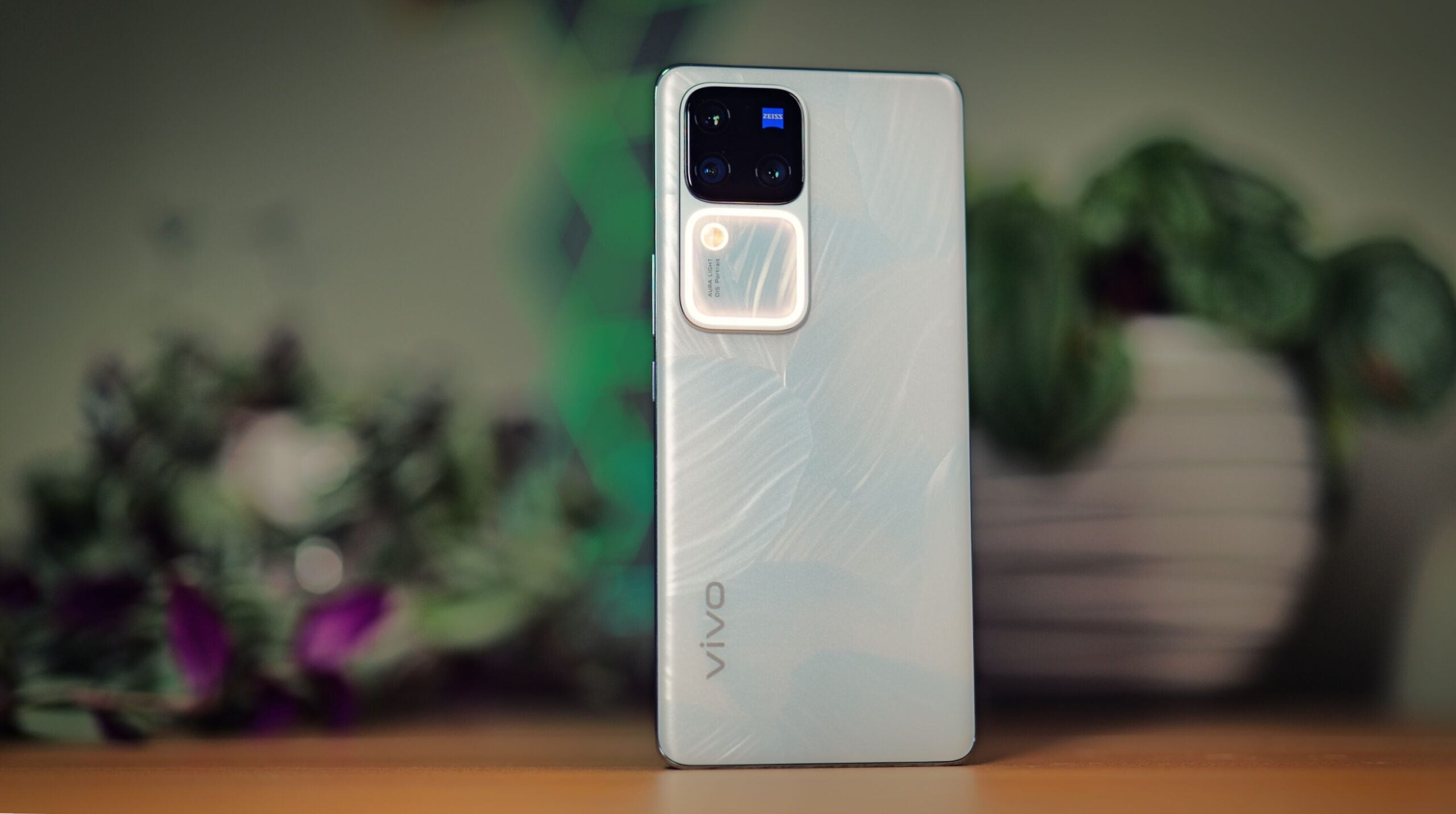
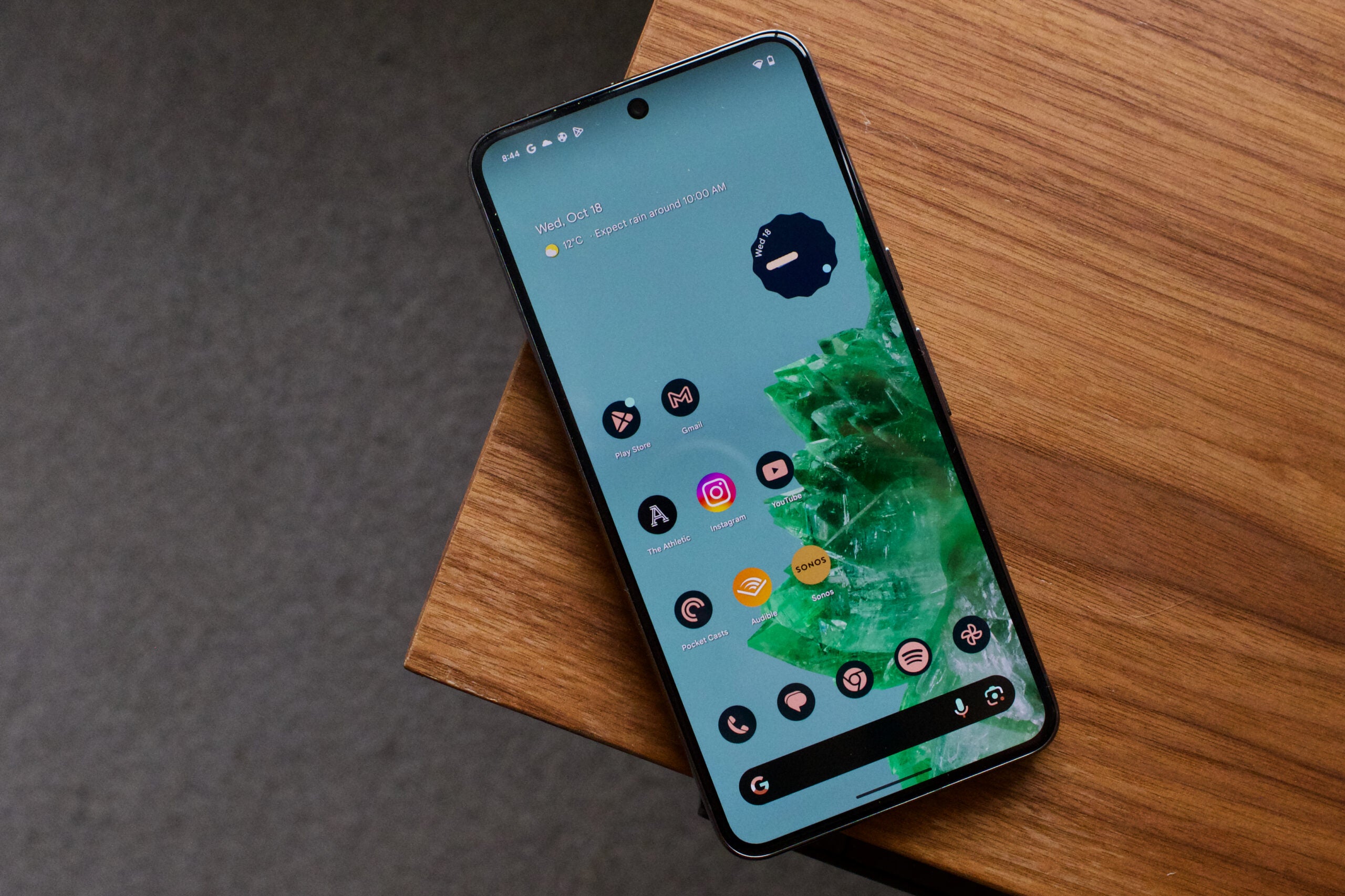


No comments